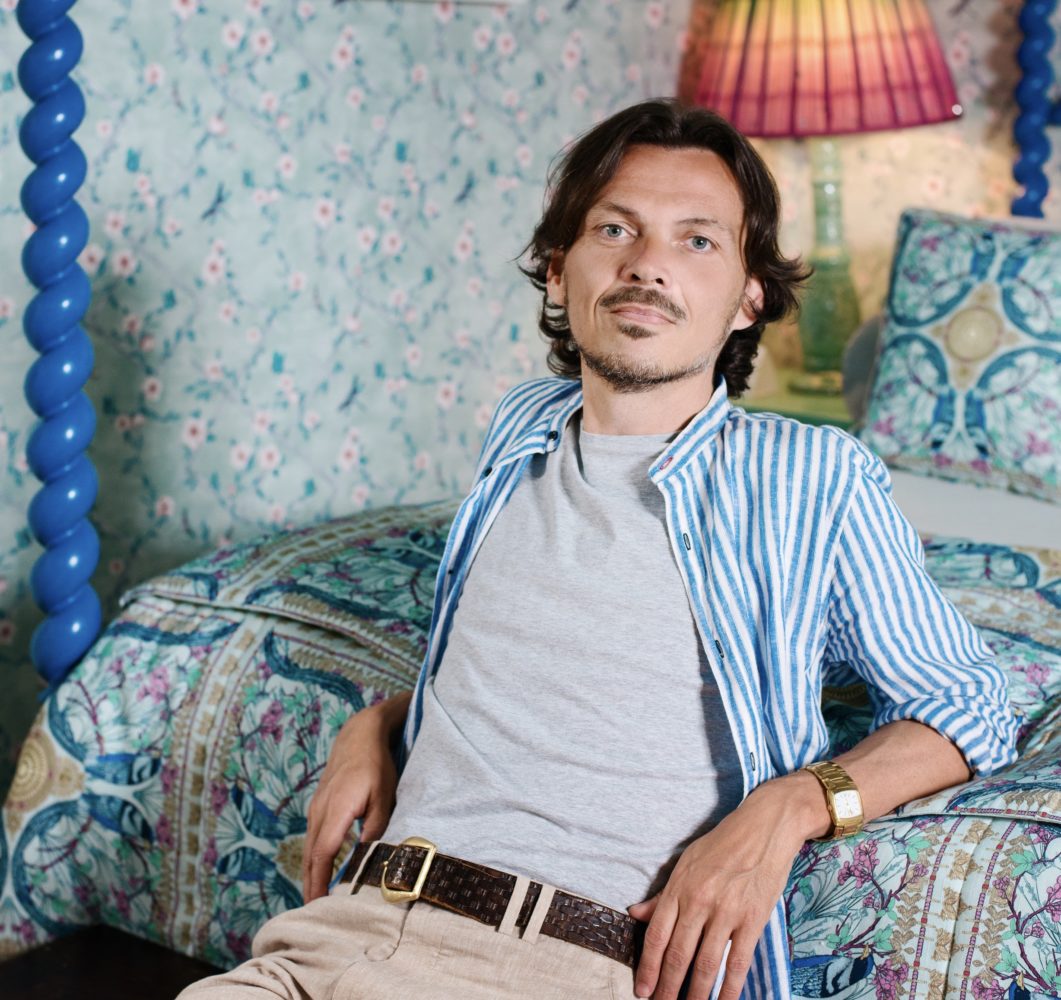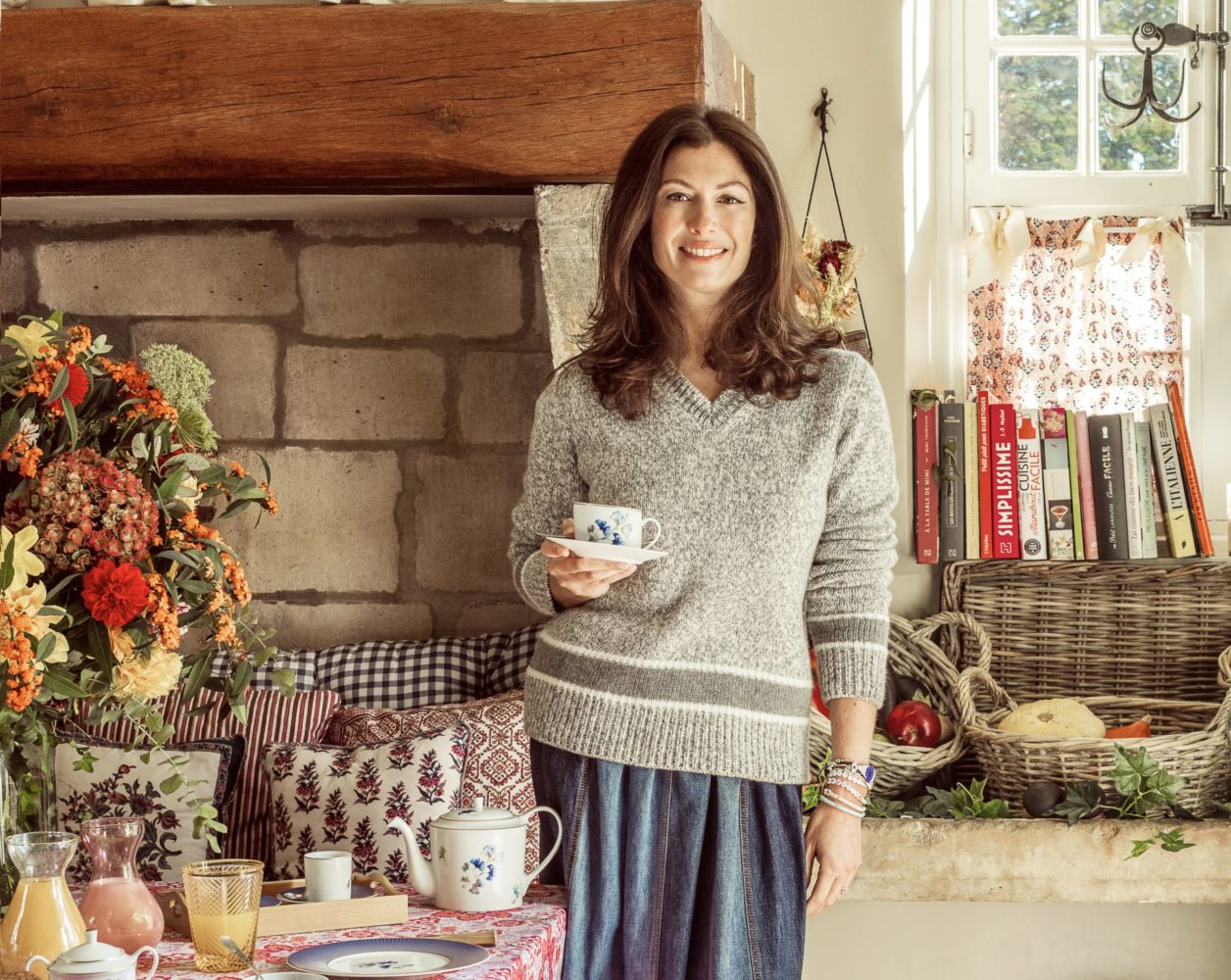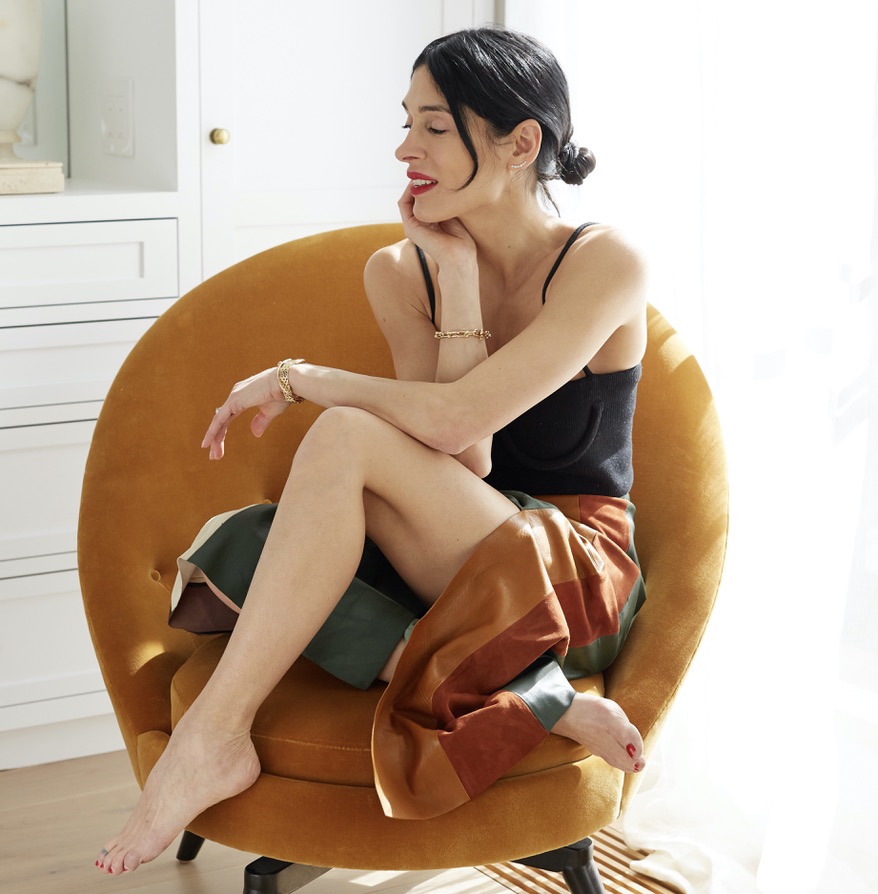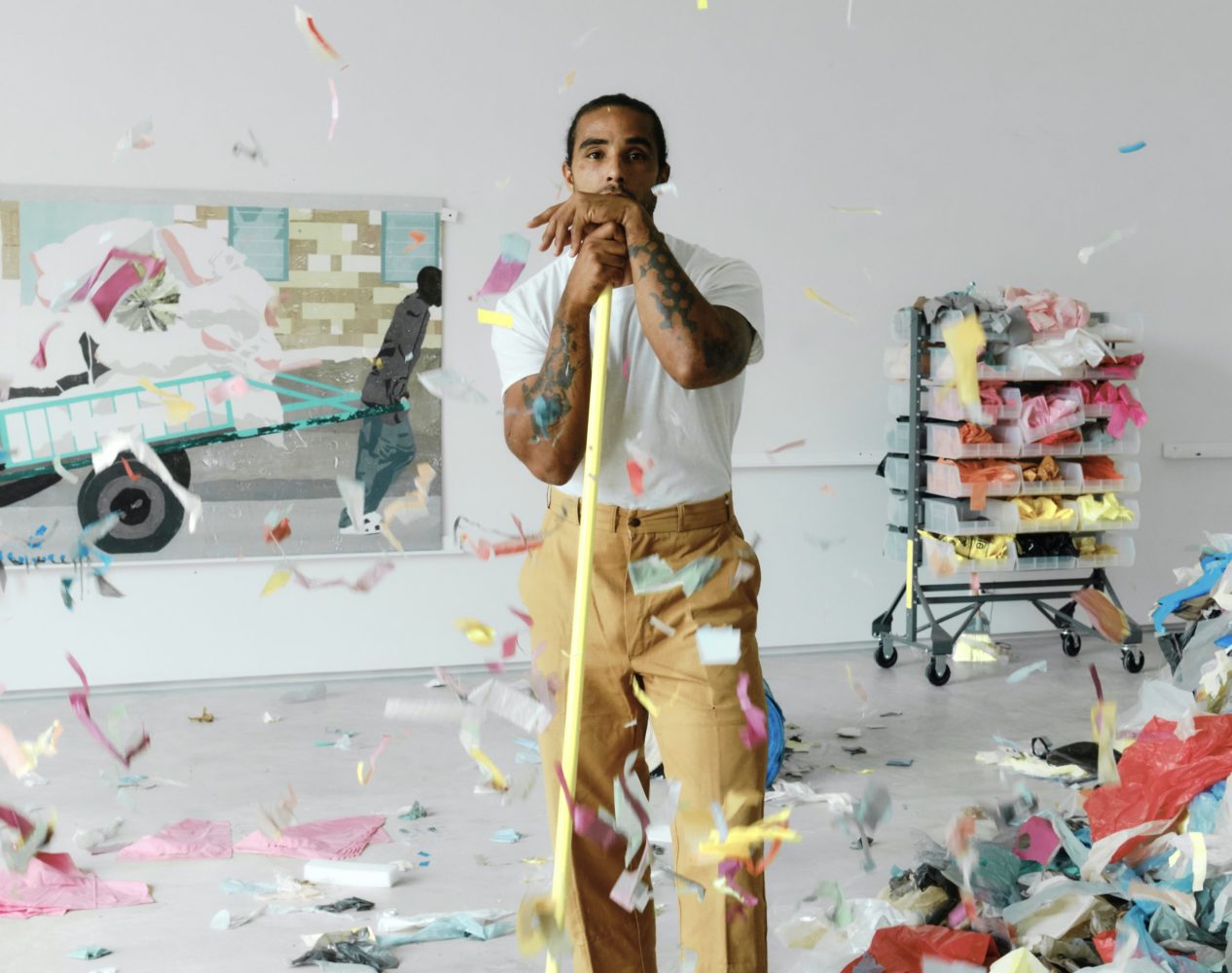Matthew Williamson likes to think of a room as an envelope. He starts with the flooring, walls, and ceiling (not to be forgotten!) as a canvas to build upon. The designer doesn’t shy away from color and pattern, and he is a master at encouraging dialogue and pleasing juxtapositions between them. After a successful two decades in fashion with his own eponymous label, Williamson seamlessly moved into interior design, where his keen understanding of scale, proportion, and expression has resulted in an array of hospitality and private projects, as well as a range of products from stationery to wallpaper, to hand-painted furniture.
His home in Deià, a coastal village in Majorca, has provided endless inspiration and space for experimentation over the past year. With travel on hold, he has spent time in his studio painting found vintage furniture, pots, canvases, and more to add vibrancy and life to his private space. Whitewall spoke with Williamson about setting the right mood, layered tablescape, and memorable moments inside and out.
WHITEWALL: You’ve said that looking back, you can now see your fashion career as training for interior design. How so?
MATTHEW WILLIAMSON: My transition from fashion design to interior design was definitely a gradual process. Five years into my 20-year career in fashion design was when the fork in the road began to appear. Since then, I have been attuned to the interior design community and aware that I wanted to make that sideways step into the distinct but similar industry. In my career as a fashion designer, I was always interested in the homes of the people I was designing for. Dressing a room and dressing a person involves different practicalities, of course, but very similar principles. Diversity in scale, attention to silhouettes, colors, and an expression of the self. The two disciplines are so entwined.
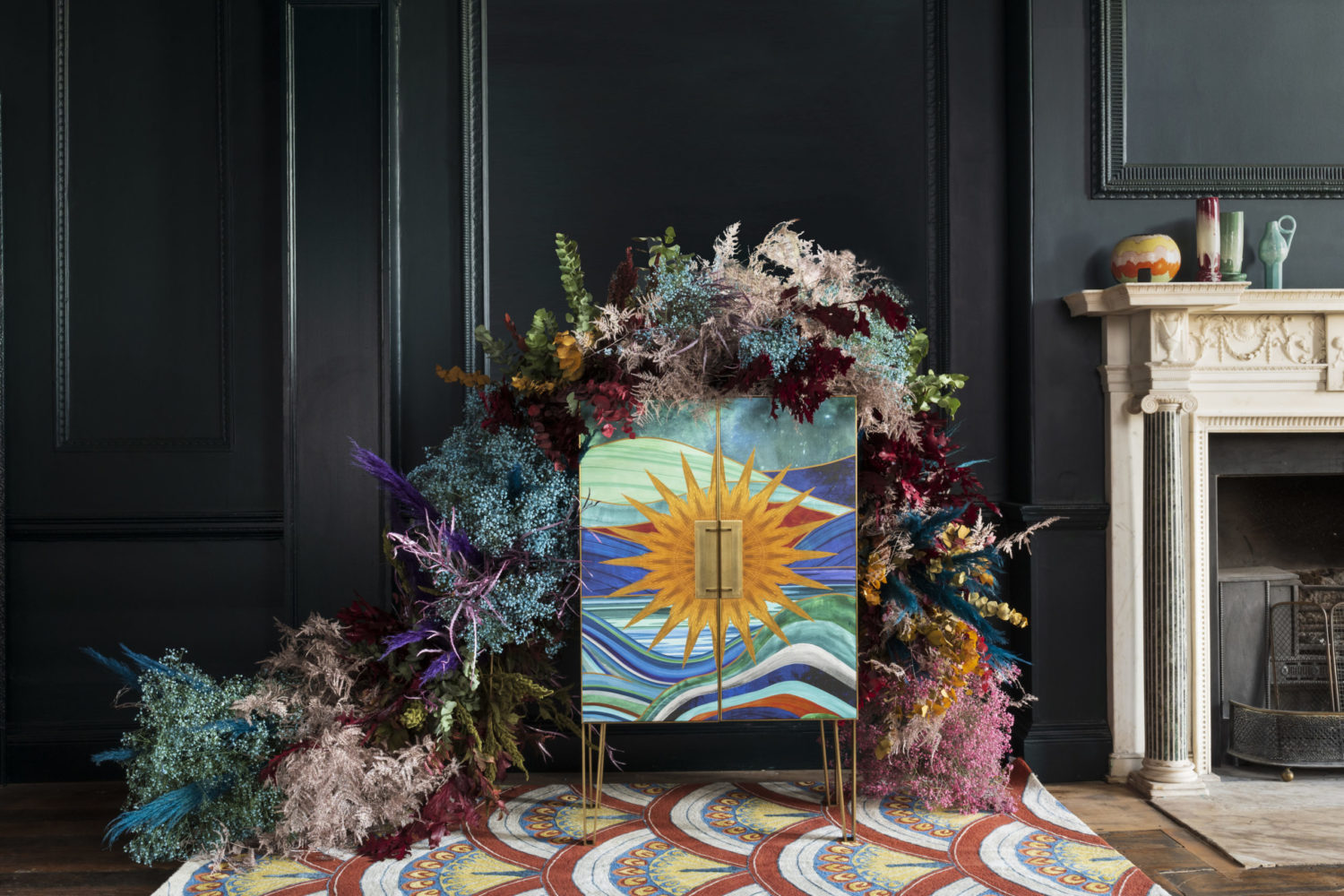
Matthew Williamson for Roome London, Tamara drinks cabinet showcasing Sunburst.
WW: One of your earliest forays into interiors was a rug collection in 2003. And recently, you’ve debuted a second collection with Obeetee. How has your vision for rugs evolved from then until now, and what is the inspiration behind the latest piece?
MW: I have always considered rugs a grounding presence in a room. This is obvious at surface level, but they work brilliantly as palettes from which you can inform the colors, patterns, and textures in the rest of a space. Across the new collection, there are varying inspirations including the natural world and sun-steeped landscapes.
WW: You have such an eye for color and pattern. What do you consider as pattern and color neutrals?
MW: It’s less about considering specific colors and patterns “neutral” as much as working with contrasting and interesting patterns and colors, encouraging a dialogue between them. I don’t see patterns and colors in a hierarchy or pyramid of neutrals at the bottom, pared-back jewel tones in the middle, and highlighter-hues at the top, but instead I look at where I can create points of interest using different colored fabrics, paint colors, and furniture. For me, a room really comes together when the colors and patterns seem to interact with each other, rather than when they are paired with grays, beiges, or whites.
WW: Your wallpaper collection is so striking. How would you describe your creative approach to designing wallpaper?
MW: Many of my wallpaper designs begin life as sketches and watercolors created by hand. I work up the drawings by hand until I’m happy with the style, quality of line, and colors, and then they’re digitized to create the repeat. The hand-drawn charm of the wallpapers, whether a watercolor render or an oil painting, is retained through the digitizing process where the team at Osborne & Little and I can determine the final look and feel of each paper. This process is a fusion of analogue and digital, a mathematical jigsaw of scale, proportion, and repeat.
WW: In a recent podcast, The Great Indoors, you said that hand-painting furniture was a lockdown project of yours. What is that process like for you?
MW: Staying creative in lockdown has been a huge source of calm for me. I spend lots of time in my studio painting furniture, canvases, and plant pots to add new life to found, sourced, or just tired-looking items. Adding color in this way gives the home (and the inhabitants) an easy, satisfying lift.
WW: What are some of your go-to methods for transforming the mood of a space?
MW: Lighting is one of the most efficacious ways to transform a room quickly. Any space can benefit from the glow of a curation of a few table lamps. I have always loved lighting, and I’m forever sourcing unique, vintage finds to sell on my own website, but the design process behind my collaboration with Pooky has enlightened me to the true science behind getting lighting right. We have actually just launched the new Phileas lamp, which is wire-free and rechargeable, meaning you can use it absolutely anywhere—even in the garden.
WW: You’ve said that, rather than rule breaking, what excites you is expectation breaking. What are some of the expectations you love breaking at the moment?
MW: This year, I have really thrown myself into product design, working with some incredible furniture makers, lighting experts, and rug manufacturers that all take things one step further to break through the expectations of the design community. My furniture collection with Roome London features hand-painted, silk-upholstered furniture like bar cabinets and sideboards, while my rug collection takes the traditional method of hand-tufting and fuses it with innovative landscape-style designs.
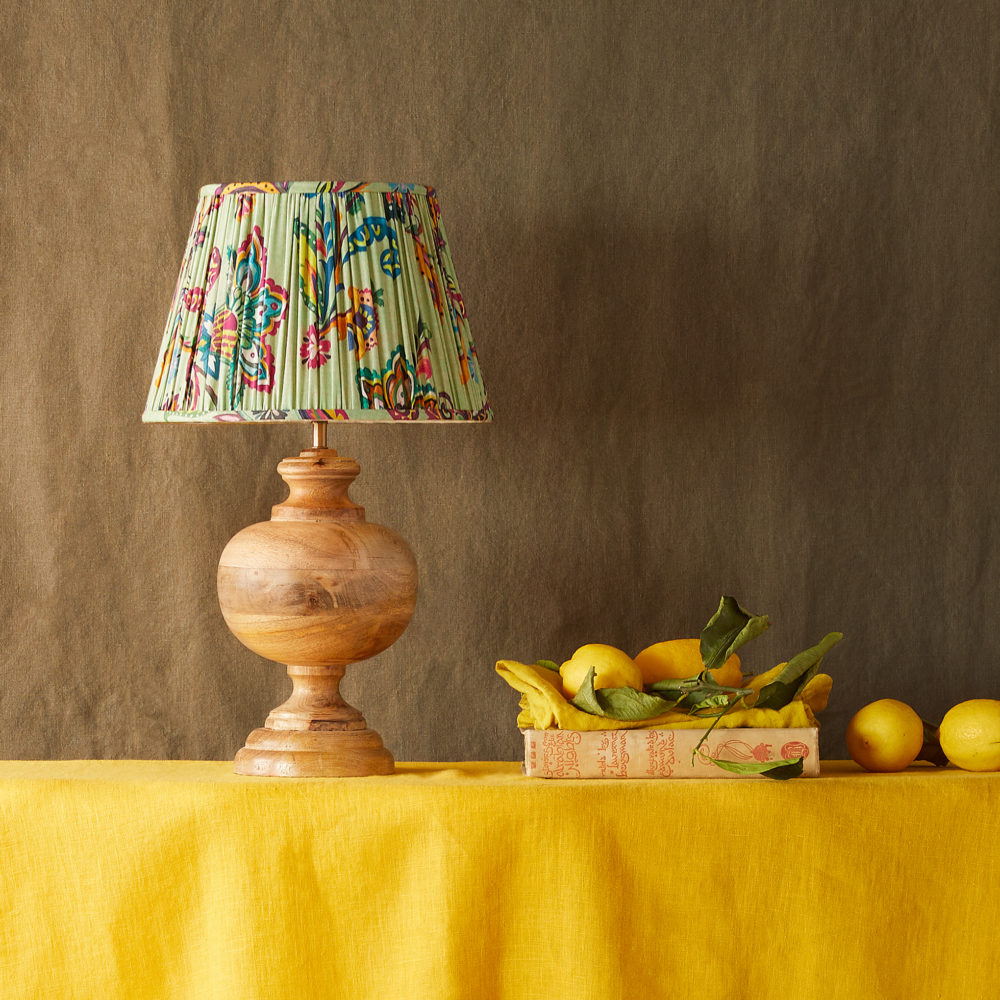
Matthew Williamson for Pooky.
WW: You’ve predicted that this year designers will be taking into consideration place of origin, issue of cultural appropriation, manufacturing methods, employee welfare. How do you look at environmental and social sustainability when you start a project?
MW: Protecting our environment is paramount in any design decision amongst my team and my collaborators. All Matthew Williamson products are created, packaged, and sold with environmental sustainability in mind. The innovative use of materials to minimize waste, the funding and support for craftsmanship, and the consideration of eco-friendly approaches to packaging and shipping are key to the success and longevity of homeware in the modern day. We strive to ensure that sustainable standards are met during the process, creating unique investment pieces that last a lifetime.
WW: What lessons from the past year, interiors-wise, do you think we’ll keep with us?
MW: There are obvious elements to the future of post-COVID design, such as wider walkways, considerate seating for social distancing, and proper ventilation, but I think that this time has allowed us to reconnect with the quieter moments in our lives. This will be reflected in interiors as we open back up. Green spaces and biophilic design in commercial buildings will be prevalent, and tech-free zones will be incorporated into more homes as we find ways to manage “switching off” at the end of the day while we’re all so constantly contactable.
WW: In the same way, we can’t wait until we can gather again around the table with family and friends. How has the craving for and excitement around future gatherings inspired designs for tabletop for you?
MW: More and more, I’m loving the process of laying the table for dinner, even if it’s just me and the family. But of course, the prospect of welcoming guests soon has got me thinking about ways to get creative with sourced antique plates and serve ware, foraged foliage and florals from the garden, and seasonal recipes. Of course, the gatherings we’re all so desperately looking forward to will be about reconnecting with loved ones in person, but second only to this is setting the scene for an intimate, soothing, and memorable evening. Layering up the table with a gorgeous, patterned fabric tablecloth, rattan place settings, wildly decorative charger plates, and bowls down the center of the table, laden with fresh summer salads. Vintage ceramic pitchers are also fantastic for floral arrangements or sangria.
WW: You’ve cited travel as a major source of inspiration for you. With so many restrictions on travel, where have you found inspiration lately?
MW: My life in Deià is endlessly inspiring. The rugged coastal landscape, the sea, and the dramatic sunsets have been hugely important for creativity in my studio. Also, the local artisans and artists have been elemental in demonstrating that creativity and passion can live on through hard times.
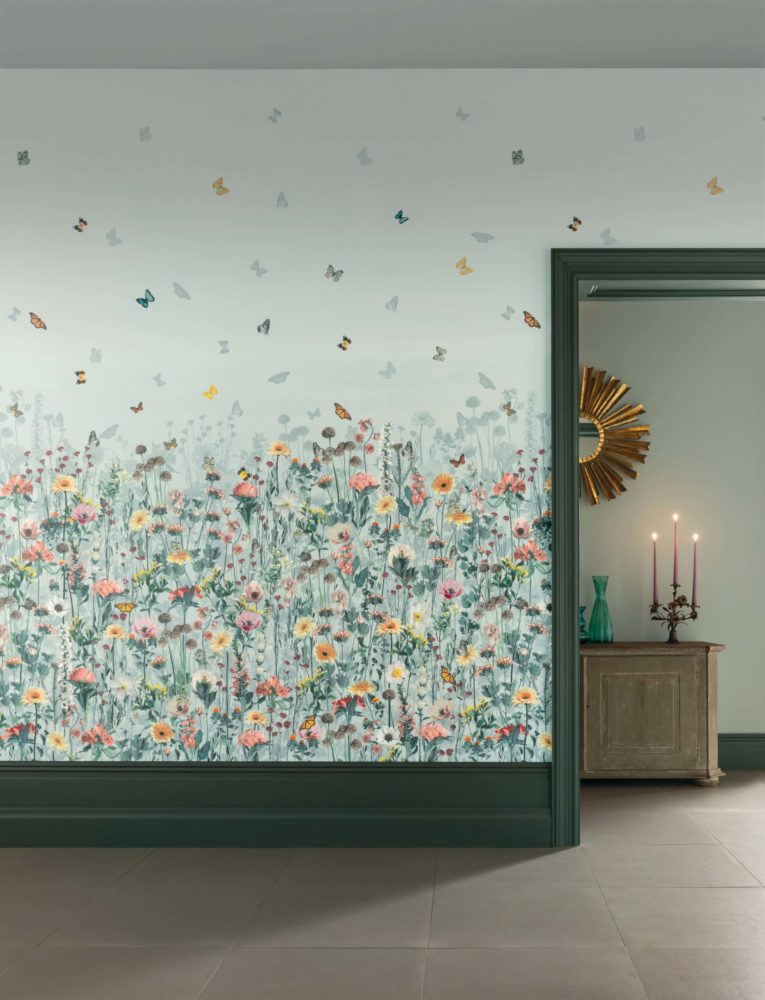
Deya Meadow Wallpaper, Daydreams Collection, courtesy of Matthew Williamson x Osborne & Little.



